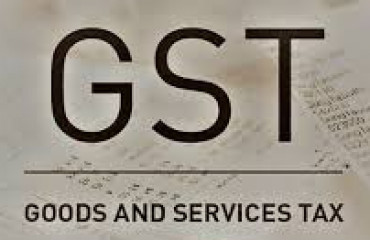
Goods and services tax (GST) collections have picked up across states, narrowing their revenue shortfall, and eroding their case for a continuation of the GST compensation.
Goods and services tax (GST) collections have picked up across states, narrowing their revenue shortfall, and eroding their case for a continuation of the GST compensation.
When states fall short of their targeted GST collection, the Centre is obligated to compensate the gap, a five-year obligation that began in 2017 and ends on 30 June. The elevated shortfall of previous years had prompted several states to push for a continuation of the GST compensation; however, data from the GST Council showed that the shortfall as a share of states' total protected revenue narrowed substantially in FY22, as return filings rose and tax collections boomed.
The trend is noticed in the case of all states in FY22, and on an average, the gap as a share of the protected revenue has reduced from 38% in FY21 to 27% in FY22, the data showed.
Besides, the share of assessees who are eligible for filing monthly tax return of transactions in form GSTR-3B on the basis of which taxes are paid, has improved steadily. In April 2022, 78% of everyone eligible for monthly return filing have filed tax returns, against 73% last November, data showed.
The latest data, which strengthens the Centre's position that states may not need GST compensation beyond 30 June, comes ahead of the GST Council meeting at the end of this month, just before the compensation scheme expires. States like Punjab, Kerala and West Bengal have been demanding an extension of the compensation period. The physical meeting of the Council is expected to be dominated by discussions on states' fiscal woes, several rule changes meant to improve efficiency of the tax system and some tax rate corrections.
An email sent to the finance ministry and the GST Council on Thursday seeking comments for the story remained unanswered till press time.
Some of the states, however, are facing overall fiscal stress. According to a Reserve Bank of India study, Bihar, Kerala, Punjab, Rajasthan and West Bengal are the five highly stressed states in terms of debt to gross state domestic product ratio.
Higher GST receipts for states certainly indicates increased tax compliance, said Rajat Mohan, senior partner with AMRG & Associates, an accounting firm. "One of the factors that has contributed to this is the nationwide enforcement measures taken by GST authorities. In some cases, businesses have opted to pay taxes they do not believe they are liable to pay in order to avoid litigation," said Mohan.
Despite the resource requirements of the Centre and states, a drastic GST rate hike is not on the agenda of the GST Council, due to the surge in inflation. In a presentation to the Council at its last major meeting in September, the Centre had suggested a slew of measures to increase revenue receipts including raising the GST rate on gold from 3% to 5%, increasing the cess on coal, hiking the 5% GST slab and doing away with exemptions. According to the presentation, one percentage point increase in the 5% GST rate will yield an additional ₹50,000 crore. Major items in the 5% slab include sugar, fertilizer, cotton, cotton yarn, e-vehicles, edible oil and branded cereals.
The Council is, however, likely to consider measures to correct tax anomalies and reduce exemptions. The Centre's presentation last year pointed out that exemptions needed to be rationalized on items like animal feed, wool, leasing of houses to corporations, and certain educational and health services. It had also recommended a correction of the inverted duty on a slew of items including renewable energy equipment, yarn, utensils, pens, water pumps, bicycles, LED lights, tractor, medical equipment, agarbatti and electric vehicles.
